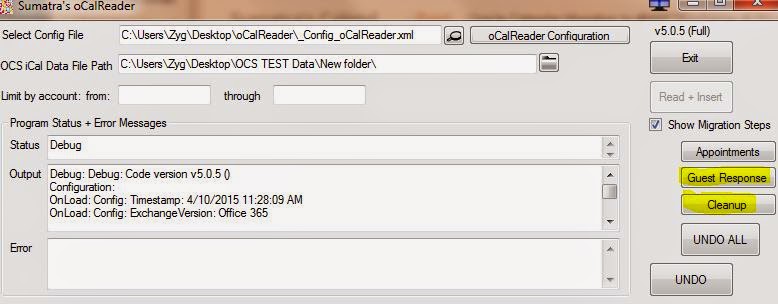Here is the summary:
1. Grant delegate permission using Outlook or OWA (aka "Classic Delegation")
2. Grant delegate permission using Exchange Control Panel (aka "Booking Delegation")
There are three problems with the "Classic Delegation" for conference rooms:
- First, since rooms are "disabled accounts", it's hard to log into them.
- Second, Classic Delegation creates two rules -- one visible (IPM Subtree folders), and one invisible (think NON-IPM Subtree folders.) When you change/remove a classic delegate, the hidden rule does not always get deleted and thus still remains in force. (Why? Outlook tries to be helpful, and when it sees there is a hidden rule, it uses the hidden rule.)
- Third, the classic delegation rules run at a higher priority than booking delegation rules. More ways to confuse administrators.
Sumatra recommends you assign room delegates using the "Booking Delegation" approach. You can either use Exchange control panel to assign booking delegates, or PowerShell. We prefer PowerShell.
There are several things you must do, depending upon how you want to handle room reservation requests
For auto-booking:
Ensure automated processing of meeting requests is set.
Example: Set automated processing for conference room 101B
Set-MailboxCalendarSettings cr_101b -AutomateProcessing AutoAccept
1. Ensure automated processing of meeting requests is disabled.
Example: Disable automated processing for conference room 101B
Set-MailboxCalendarSettings cr_101b -AutomateProcessing None
Set-MailboxCalendarSettings cr_101b -AutomateProcessing None
2. Decide on your room administrators, grant them permission, and allow the room to receive requests but NOT allow direct booking. (You and also play with Book-in and Request-In policies starting with this old but good Technet Article....this is beyond the scope of our post, though.)
Example: Allow Russ Iuliano to manage Auditorium meeting requests.
Set-CalendarProcessing Auditorium -AllBookInPolicy $false -AllRequestInPolicy $true -ResourceDelegates "Russ Iuliano"
3. Grant administrators permission to send on behalf of the room.
From time to time, you may notExample, Grant delegate "riuliano" send as permissions on behalf of Room CR 101B
Add-ADPermission cr_101b -Trustee riuliano@sumatra.com -AccessRights "Send As"
Finally, You can read more about creating and managing room booking on Microsoft Technet.

























